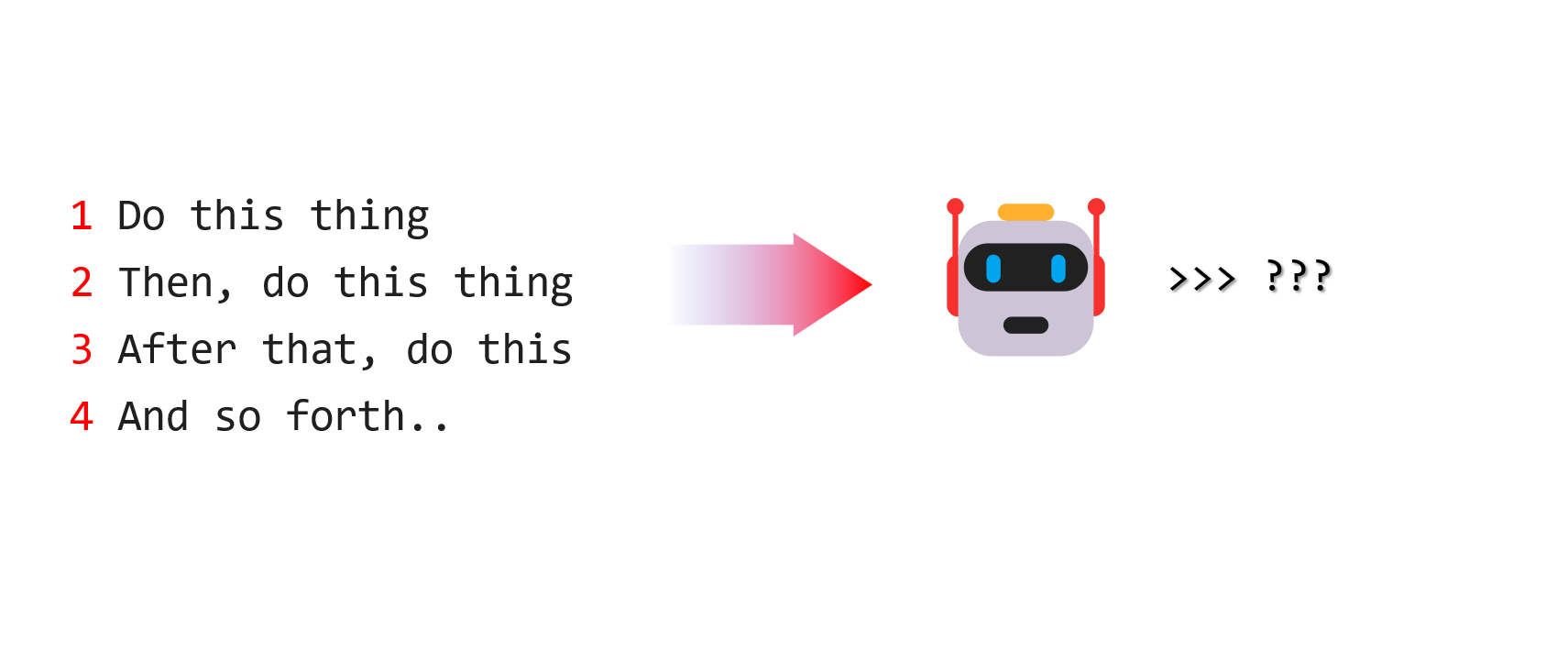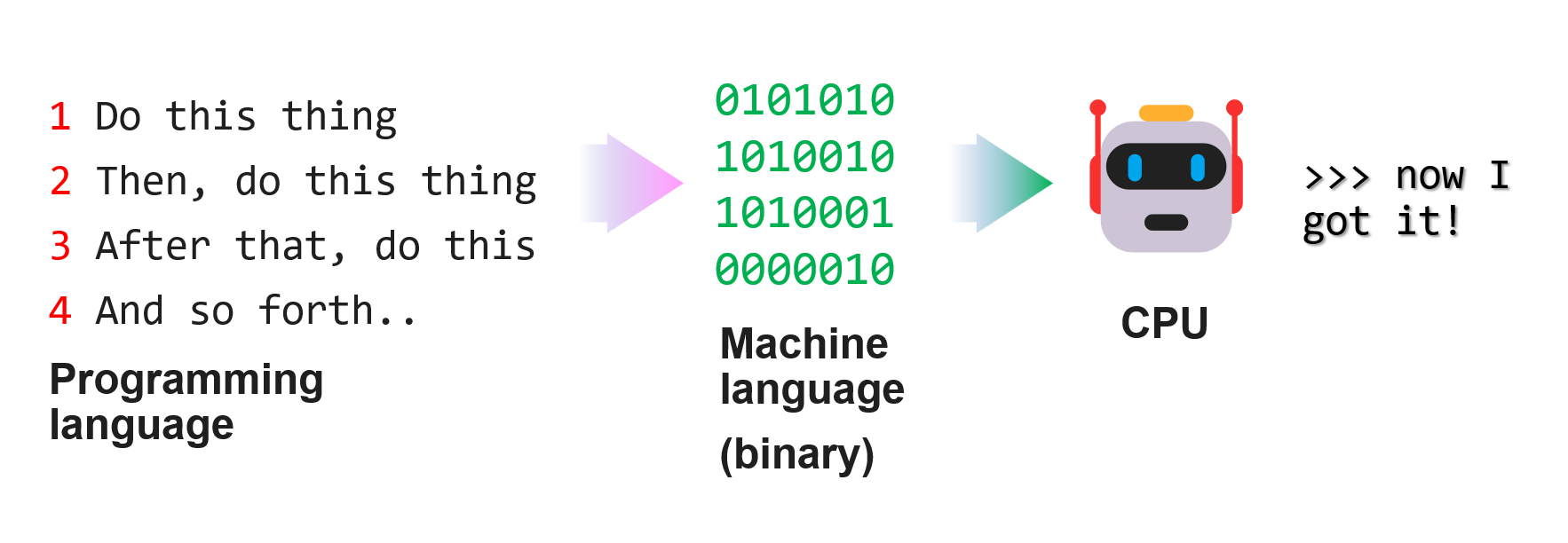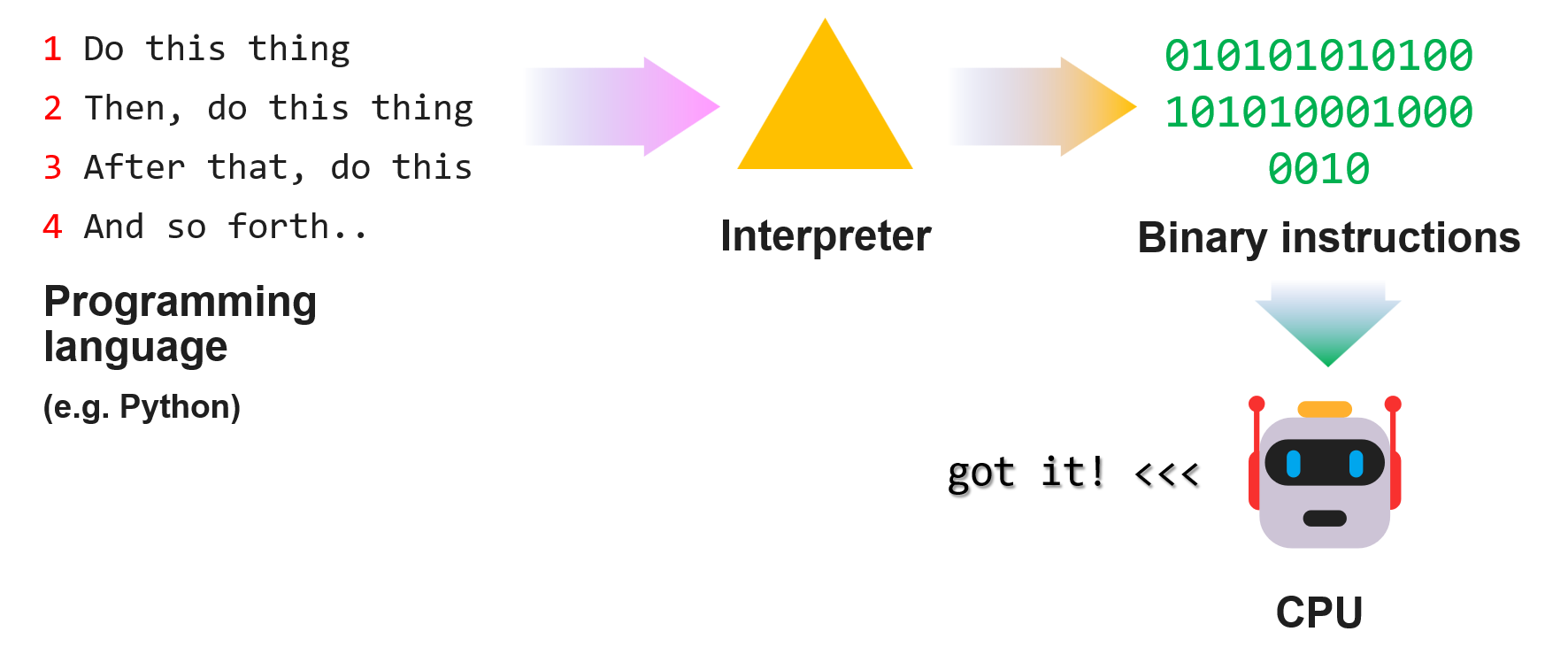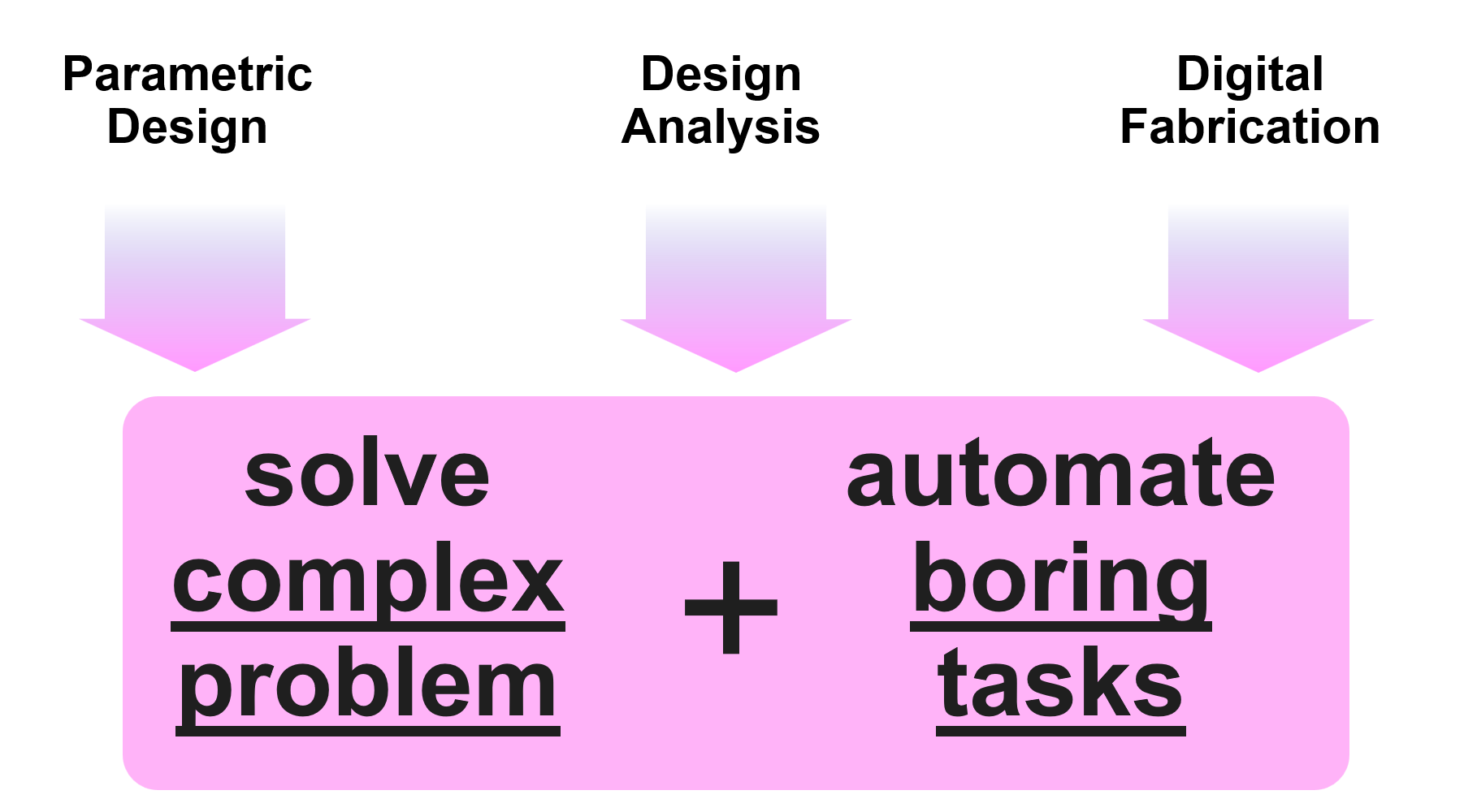Intro to programming
A program is simply a set of instructions to be executed by a computer.
The problem is that computers don’t understand human language. They only understand machine language. Machine language is a set of instructions written in binary code (0s and 1s). But how can we write a program in binary code? It would be a nightmare! That’s why we use programming languages. A programming language is a set of instructions written in a language that humans can understand. Then we translate it into machine language.
This translation is done by a compiler. A compiler is a program that translates a program written in a programming language into machine language. The compiler is the one that actually creates the executable file that the computer can understand. This is used for programming languages like C, C#, or C++.
Alternatively, we can use an interpreter. An interpreter is a program that reads a program written in a programming language and executes it directly. This is used for programming languages like Python.
⚠️ The closest the programming language is to the machine language, the faster it will be. But the further it is from the machine language, the easier it will be to write a program. That’s why we use high-level programming languages like
PythonorJavafor beginners. They are easier to learn and to use. But they are slower than low-level programming languages likeCorC++.<\i>
Computational Design
When we talk about computational design, we are talking about the use of programming in design.
You can do many things with programming skills but we can resume all the applications in 3 main area of application:
- Data-driven design: Design with with algorithms or parameters
- Design analysis: Analyze a design
- Digital fabrication: Be able to handle geometry for digital fabrication
No matter your are of application, you will always need to think computationally. This means that you will need to think about how to solve a problem in a way that a computer can understand. This is called computational thinking.
Now that you know what is computational design and computational thinking, let’s where programmers usually write their programs.




